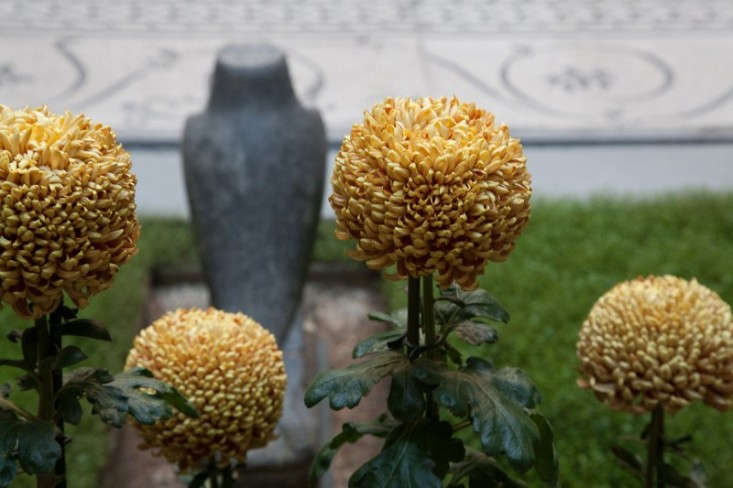Chrysanthemum: Chrysanthemum indicum
Chrysanthemums don’t get the respect they deserve. For one thing, the only time anybody thinks of these cheery daisies is in the autumn, when you see them sold widely in plant nurseries and garden centers— at the exact wrong time to plant them if you want them to bloom again next year.
This creates a vicious cycle for the poor mum, purchased in August or September only to be treated as an annual filler flower and replaced next year. Which is why we are here, in January, to get you to think a new way about these lovely members of the daisy family. May we suggest that you start chrysanthemums from seed indoors in early spring—two months before the last frost date in your region—and harden them off before you transplant seedlings to the garden to grow perennial flowers (in USDA zones 5 to 9)?
Another benefit to starting with seeds is you will be able to choose among a wider selection of varieties, such as spider mums, and more colors. (See UK gardener Sarah Raven’s Abundant Chrysanths Collection for £8.95, of five rooted varieties: ‘Anastasia Green’, ‘Yara Green’, ‘Porto Purple’, ‘Orange Allouise’, and ‘Sheer Purple’.)
Are chrysanthemums the right flower to grow in your garden? Read on for everything you need to know:

To learn more of the history of chrysanthemums, we turn to the National Chrysanthemum Society. which reports that “the chrysanthemum was first cultivated in China as a flowering herb and is described in writings as early as the 15th century B.C..”
Over the centuries, as chrysanthemums traveled around the world and were tinkered with by generations of growers, their shapes and sizes changed. “Ancient growers would not recognize modern mums. Although some mums still resemble daisies, others are more showy,” notes the society.

Mums’ flower colors range from white to yellow to red, to pink, purple, and bronze and in the US more than 100 different cultivars are grown. Chrysanthemums flower in many different shapes, from varieties that look like pompoms, to spider mums, quilled mums, and anemone mums with tight button centers.

If you don’t start your own from seed, the best time to buy chrysanthemum seedlings is in the spring. This will give them several months to establish a healthy root system that can survive winter. Don’t worry—they’ll bloom the first year.

The chemical pyrethrum, which occurs naturally in chrysanthemums, is an insect repellent. For natural pest control, plant chrysanthemums at the perimeter of an edible garden bed. See more in Edible Gardens: A Field Guide to Planting, Care & Design.

Cheat Sheet
- Perennial mums should be divided every three years to keep them healthy and encourage blooming. To divide, dig up a plant in early spring, divide its root system into three or four separate sections, and replant them all.
- Popular container plants, chrysanthemums in pots should be fertilized weekly to keep them flowering.
- In the garden, good companion plants for mums are vegetables and late-season flowering perennials such as coneflowers. In containers, pair them with Sedum ‘Autumn Joy’ and alyssum.

Keep It Alive
- Chrysanthemums like moist well-drained soil (if it’s too dry, their roots won’t spread and if it’s too wet, the roots will rot).
- Full sun (six or more hours a day) will encourage chrysanthemums to flower profusely.
- When transplanting seedlings, remember that most mums will reach a diameter of 3 feet at maturity; don’t crowd them.

Read more growing tips in Chrysanthemums: A Field Guide to Planting, Care & Design in our curated guides to Perennials 101. Read more:
- Flower Arrangements 101: A Crash Course for Easy and Elegant Florals
- Chrysanthemums: Rethinking a Fast-Food Flower
- 8 Best Plants, to Move Beyond Mums
- Rethinking Double Flowers: Back in Love with ‘Flower Show’ Plants








Have a Question or Comment About This Post?
Join the conversation